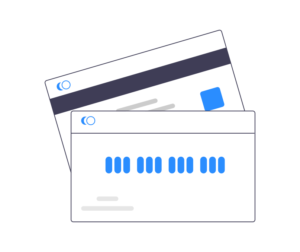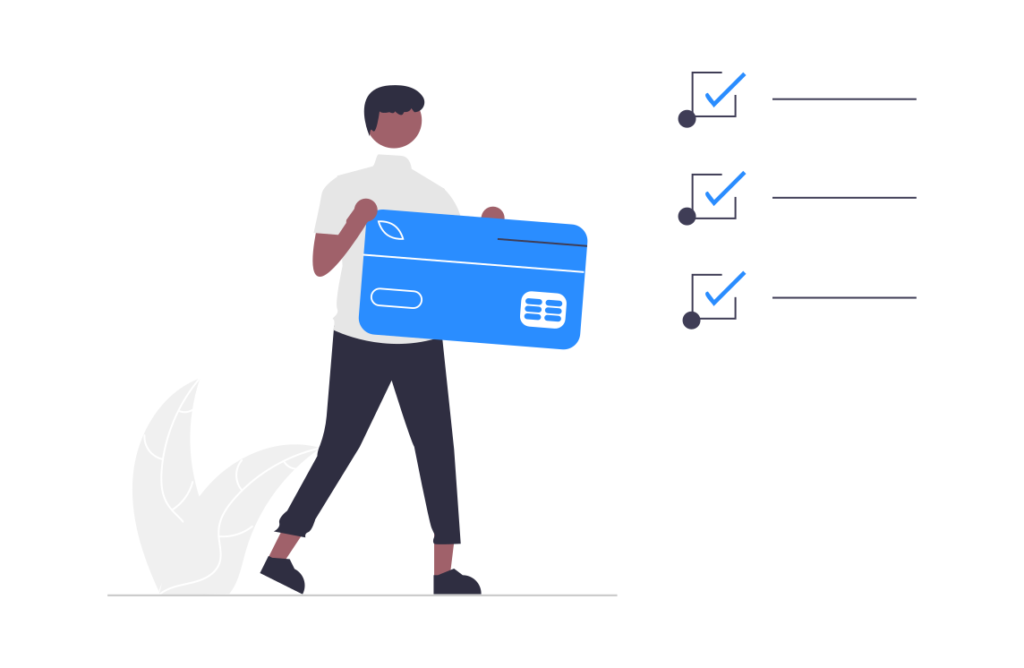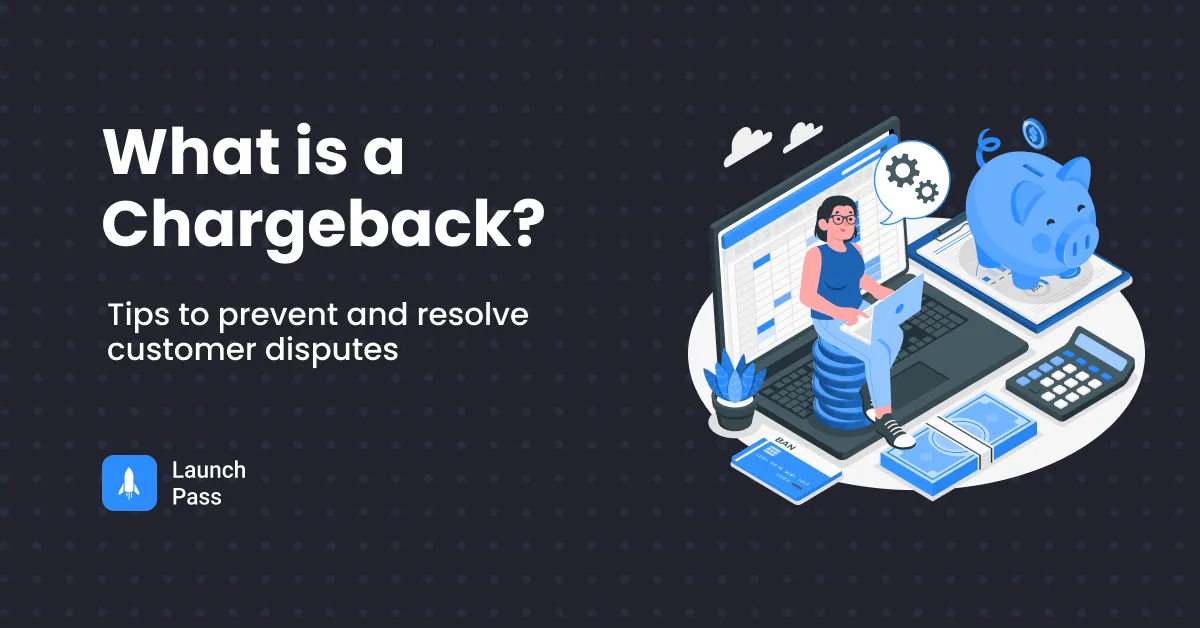Chargebacks are a growing issue for many businesses. According to Chargebacks911’s 2021 Field Report, there has been a 25% average increase in chargeback issuances due to the pandemic.
When you’re running a paid chat community or subscription service, they can be even more of a problem. Revenue you thought you had secured is suddenly lost, and if you have a lot of these types of disputes, it can be a big blow to your bottom line.
It’s smart to make sure you have the lowest chargeback rate possible by taking the right steps to avoid them.
In this article, we’re going to dive into:
- What is a chargeback?
- How to prevent chargebacks
- How to handle customer disputes so all parties are satisfied
What is a Chargeback?
A chargeback is the return of money to the payer of a transaction after that payer has disputed that transaction. The majority of chargebacks happen when a customer claims that the charge is fraudulent — in other words, that they didn’t make the purchase. For subscription businesses that sell digital services, this is the most common. However, there are a myriad of other reasons, including technical errors; dissatisfaction with the product or service provided; or purchasers saying they never received a product.
How chargebacks works
When the payer of a transaction (ie the customer) disputes a charge, the credit card merchant or payment processor reverses the transaction and gives the customer his or her money back. The process may differ based on the card provider, but generally the customer disputes the charge and provides any documentation or correspondence with the seller (though not always).
Payment processors will typically ask customers to first try and resolve an issue or dispute directly with the seller before initiating a chargeback, with chargebacks intended to function as a last resort.
Chargebacks are quite easy to initiate — which is great from the perspective of protecting consumers from fraud or shady businesses, as intended; but bad from the perspective of honest businesses that are being unfairly subjected to them. Unfortunately, the latter scenario is also on the rise, with a 21% year-over-year increase in “friendly fraud” (illegitimate chargebacks) between 2018 and 2021.
Why chargebacks are bad
Your bottom line isn’t the only reason why your business should strive to avoid chargebacks as much as possible. Apart from lost revenue, chargebacks are bad because:
- Sellers are the ones that incur chargeback fees, and potentially additional payment processing fees.
- The combination of lost revenue and additional fees to the seller means they might have to raise prices if chargebacks become a significant issue, meaning consumers are also negatively affected.
- A high chargeback rate can impact your reputation with credit card merchants and payment processors — if you are seen as high-risk, some might even terminate your account.
How To Prevent Chargebacks from Customer Disputes

Unfortunately, you can’t completely prevent chargebacks.
The good news? There are a number of actions you can take to reduce and prevent chargebacks and therefore, keep revenue more predictable. Below, we’ll outline some of the steps you can take to both prevent chargebacks from happening, and win chargeback disputes you believe are illegitimate.
Reduce or Prevent Chargebacks From Happening
1. Make it easy for customers to recognize the charge
Sometimes, chargebacks are a result of customers not recognizing the charge. This could be because what they see on their credit card statement doesn’t match your company name (for example, if you use a legal name or corporation number that is different from your operating name). Make sure that what customers see on their statement is recognizable by using your DBA (Doing Business As) name.
2. Send payment receipts/invoices
Remind customers what they are paying for by sending invoices or payment receipts. This is particularly useful if you have a subscription-based model with regular, recurring payments.
3. Offer top-notch customer service
The majority of (legitimate) customer concerns can be resolved without the need to escalate to a chargeback. Given that customers should contact you with any issues before they initiate a chargeback, you have the opportunity to avoid chargebacks by working directly with your customers.
Here are some tips to help ramp up your customer service to deal with disputes:
- Have a clearly defined refund/returns policy that is self-directed so customers have the ability to resolve issues independently if they choose. Make it easy to escalate to your support team, if needed.
- Respond quickly. If there is a standard wait time to field customer inquiries, it’s good practice to let customers know — for example, a chatbot on your website could provide your team’s average response time.
- Create an internal process and train up your customer service team so you can standardize, refine, and scale dispute resolution.
4. Leverage automated tools
There are a number of automated chargeback prevention tools on the market that help to curtail chargeback risks, which typically fall into three categories: Pre-transaction, post-transaction or post-authorization, and source detection.
Pre-Transaction tools help identify things that could trigger a chargeback before the transaction happens, typically relating to fraud.
Post-Transaction tools let sellers know of disputes that are in progress but have not yet escalated to a chargeback, for example chargeback alerts or inquiry tools.
Source Detection tools leverage data and patterns to let you know why chargebacks are happening so you can address any underlying issues.
Here is a great resource on the types of chargeback tools available, with a number of examples under each category.
TIP: As LaunchPass is a Verified Stripe Partner, LaunchPass customers can check out Stripe Chargeback Protection as an option to help reduce and prevent disputes.
Win “Friendly Fraud” Chargeback Disputes

Unfortunately, winning a chargeback dispute as a seller is pretty difficult. That said, if you believe chargebacks are fraudulent, there are a number of ways you can protect your revenue and your reputation with card issuers and payment processors.
1. Understand the chargeback reason
There are “reason codes” associated with chargebacks. Understanding what the reason is will help you to gather evidence to dispute the charge if you deem it worthwhile to do so. This resource from Chargebacks911 gives a great breakdown and also lets you look up specific reason codes.
2. Stick to Deadlines
If you are able to dispute a chargeback, you will typically have a time window in which you are allowed to do so provided by the card issuer. Make sure you adhere to this deadline. If you don’t, there’s no chance to recover the revenue.
3. Gather Evidence
Compelling evidence that you’ve delivered your product or service is crucial to winning a chargeback dispute.
Selling digital goods and services is a bit of a double-edged sword in this regard. On the one hand, since you aren’t providing a physical good, you can’t lean on things like delivery confirmation, shipment tracking, etc., as evidence.
But on the other, digital services give you the ability to gather a ton of evidence showing that you provided your service to the customer, including things like usage logs, customer login activity, IP address and geographical location, and more.
If you respond to the dispute with strong evidence, your chances of winning are much higher. This resource from Midigator provides additional tips on how to strengthen your dispute response.
When it comes to preventing chargebacks, the above tips can help ensure that you reduce their frequency, have a better chance of winning disputes when they do arise, and ultimately protect your revenue and seller reputation with payment processors. Providing exceptional customer service is a must — when your customers are provided a good experience when facing issues, it can help turn them into proponents of your brand.
Ready to start your own paid chat community? Sign up for a free trial with LaunchPass today!
